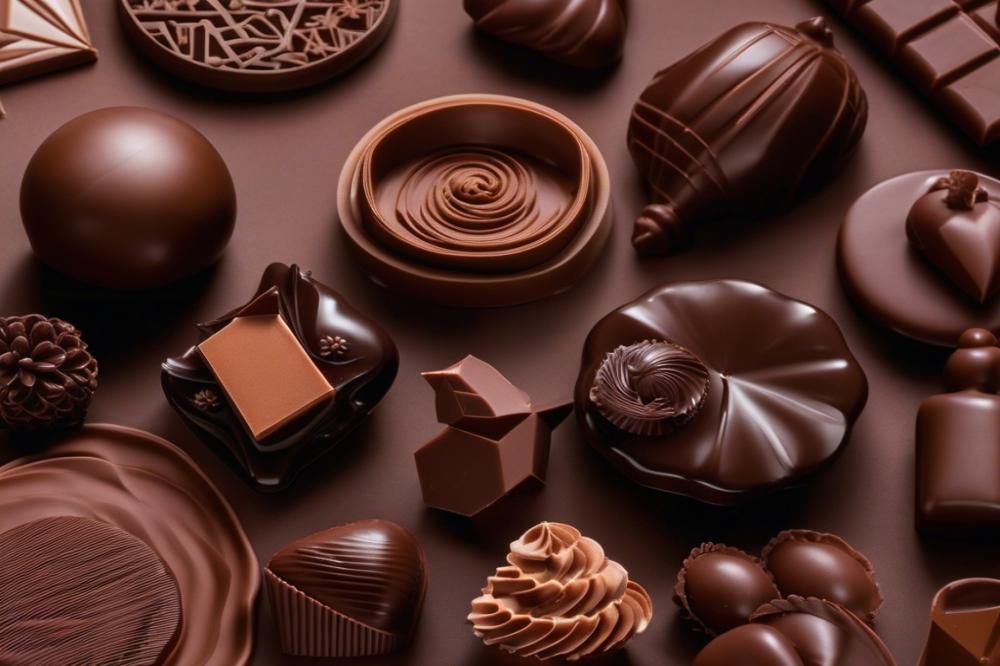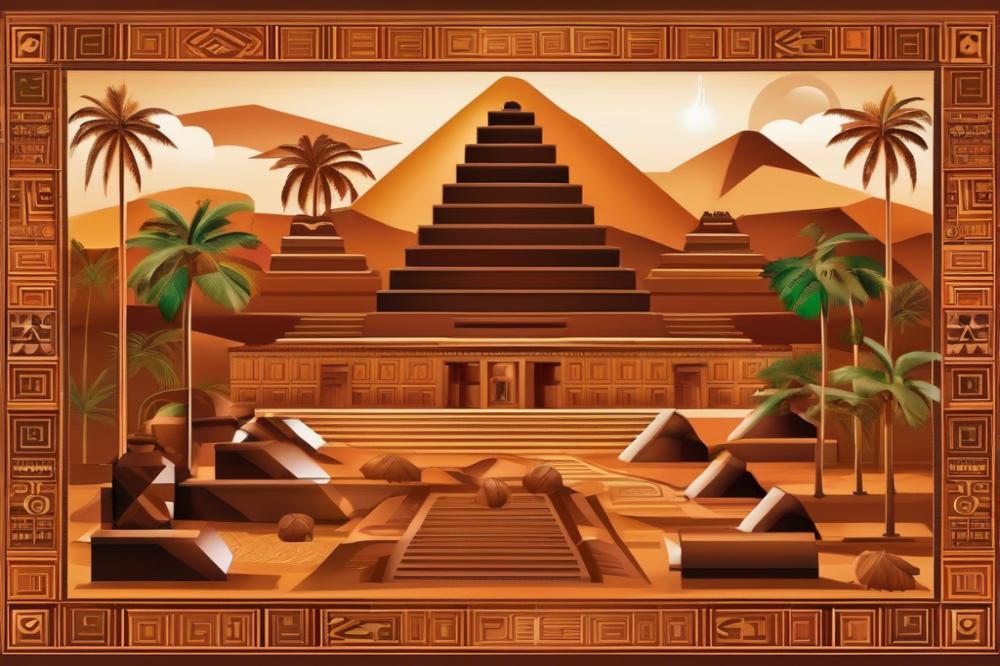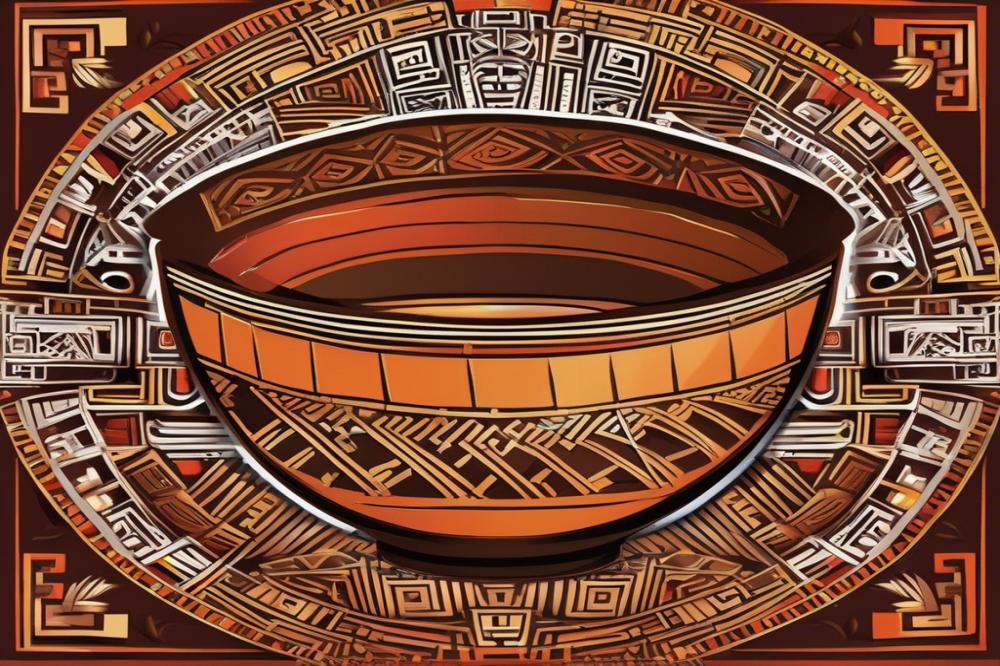Introduction
Chocolate has long been treasured as a delightful delicacy. Its rich history stretches back centuries, beginning with ancient civilizations who valued it as a luxury item. Over time, it has transformed remarkably, evolving from a simple treat into a canvas for creative expression. Today, chocolate is not just a sweet indulgence; it has earned its place in the world of art and culinary craftsmanship.
Chocolate art has emerged as a fascinating branch of the culinary arts. Artists and chefs have discovered that chocolate can be molded into beautiful edible sculptures. The process of chocolate sculpting showcases both skill and creativity. It demands precision, patience, and a deep understanding of the medium. This fusion of culinary expertise with artistic vision has redefined dessert decoration.
Event displays featuring stunning chocolate designs captivate audiences everywhere. Festivals and chocolate exhibitions highlight this remarkable craftsmanship. At these events, visitors are treated to mesmerizing pieces that challenge traditional ideas of what a dessert can be. Chocolate, once regarded merely as a sweet treat, now dazzles as a refined art form.
As the world of culinary arts continues to expand, chocolate sculpting stands out. It combines taste with beauty, allowing chefs to tell a story through their creations. This blend of flavors and visuals leaves a lasting impression on anyone lucky enough to experience it. Through this lens, chocolate not only satisfies the palate but also pleases the eye, making each display a feast for all the senses.
The Origins of Chocolate and Its Early Uses
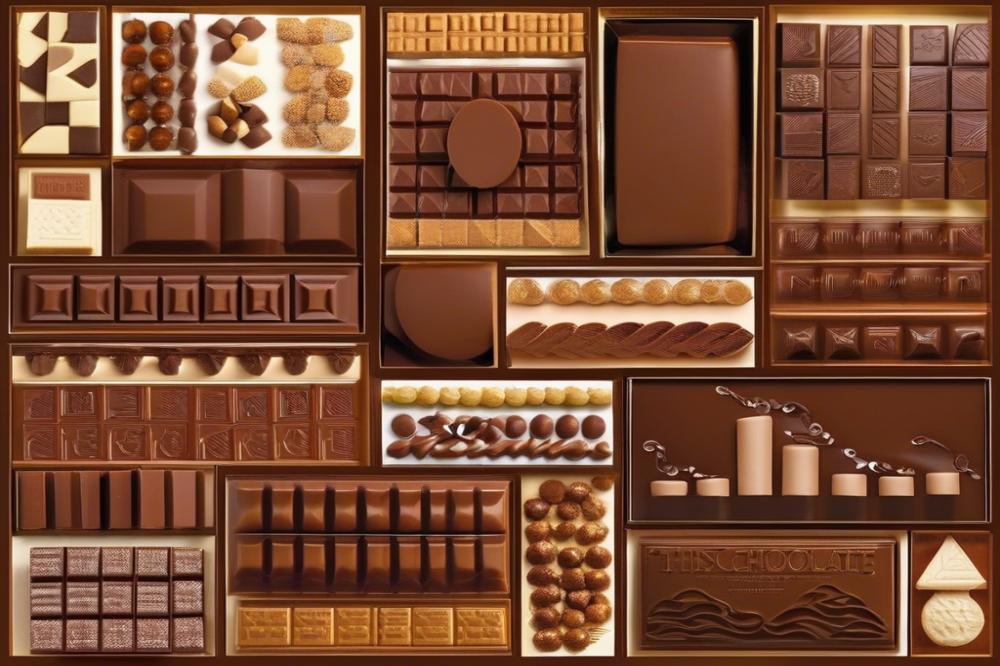
The story of chocolate begins in ancient Mesoamerica. Here, the cacao plant was treasured among the Olmecs, Mayans, and Aztecs. They believed cacao had divine origins, linking it to gods and rituals. In these cultures, cacao beans held significant power, even serving as currency. With cacao, people could trade for goods and services. It was not just a snack; it was integral to their economy.
Cacao was used in various rituals and ceremonies. The Mayans prepared a bitter drink from ground cacao beans, often flavored with spices and honey. This drink, known as “xocolatl,” played a central role in their social and ceremonial occasions. It was reserved for the elite and used in celebrations, marking important life events. In contrast, the Aztecs prized it as a gift to their warriors before battles.
Artistry came into play even in early chocolate preparation. While the first drinks were not sweet or frothy like modern versions, they were often presented beautifully. Early chocolate art involved decorative cups and elaborate serving methods. This focus on presentation set the stage for future developments in dessert decoration and chocolate design.
As chocolate spread beyond Mesoamerica, it underwent transformations. European cultures began to adapt cacao, sweetening the drink and making it more accessible. The evolution of chocolate continued over the years, influencing both culinary arts and confectionery trends. Chocolate became a beloved ingredient for desserts and an important part of culinary traditions worldwide.
The essence of cacao and its legacy persists today. Modern events celebrate this rich history through chocolate exhibitions. These events showcase stunning edible sculptures that display the craftsmanship of skilled artists. The art of chocolate sculpting captivates audiences, turning simple ingredients into remarkable visual masterpieces. Each creation tells a story, blending flavors with artistry to enchant those who experience it.
The Emergence of Chocolate as an Art Form
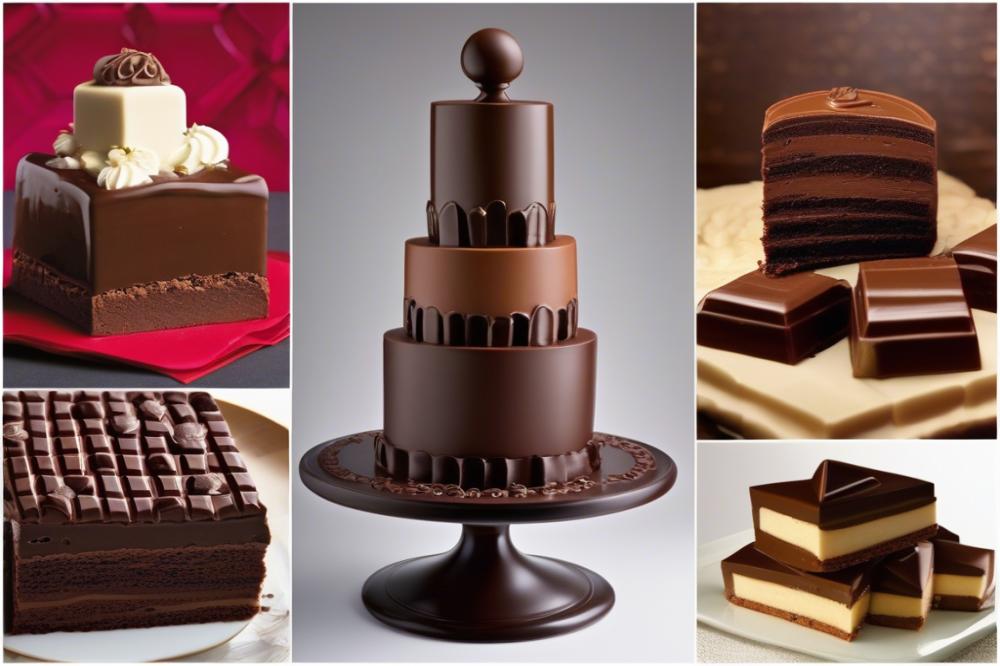
Chocolate has a rich history that stretches back centuries. Originally, it was consumed as a bitter drink in Mesoamerica. However, in Europe, it transformed into something sweeter and more appealing. As chocolate made its way across the ocean, people began to explore its potential beyond just a beverage. It wasn’t long before confectionery shops started to create stunning displays that caught the eye and delighted the taste buds.
In the 17th century, chocolate gained popularity as a luxury item. Craftsmen began to recognize chocolate as more than mere sustenance. Artists began crafting intricate designs and edible sculptures. Each masterpiece showcased remarkable craftsmanship. Shops filled with ornate chocolate figures became fashionable. Customers were drawn in by the beauty displayed on the shelves.
As time marched on, chocolate art found its place in the world of culinary arts. Chefs started to incorporate chocolate design into their dessert decoration. This shift allowed them to create unique and stunning presentations for various events. Chocolate became a vital ingredient in making special occasions even more memorable. Chocolate exhibitions emerged, featuring talented artisans showcasing their impressive creations. Events became platforms to exhibit not only sweets but also the creativity that chocolate inspires.
Notably, the rise of chocolate in various forms opened doors to extraordinary possibilities. Confectioners began to push boundaries, crafting larger and more elaborate pieces. Edible sculptures took center stage in competitions and public showcases. Various techniques were developed to mold chocolate into intricate shapes. From floral designs to life-sized figures, the diversity in style was mesmerizing. Such displays helped elevate chocolate to an esteemed position within the culinary world.
Celebrations and festivals often included chocolate as a central highlight. Event displays featuring chocolate sculptures soon became a staple. People marveled at the skill and vision behind each creation. Passersby would stop and stare, captivated by the blend of art and taste. This fascination continues to grow, as chefs and artists alike explore new ways to innovate.
The relationship between art and chocolate will likely evolve further as trends change. While the craft may seem simple, creating chocolate art requires dedication. Each piece must balance aesthetics with flavor, proving it’s truly a labor of love. As we look back at its emergence, there’s no denying chocolate has carved its path into the world of art.
Techniques and Craftsmanship in Chocolate Sculpting
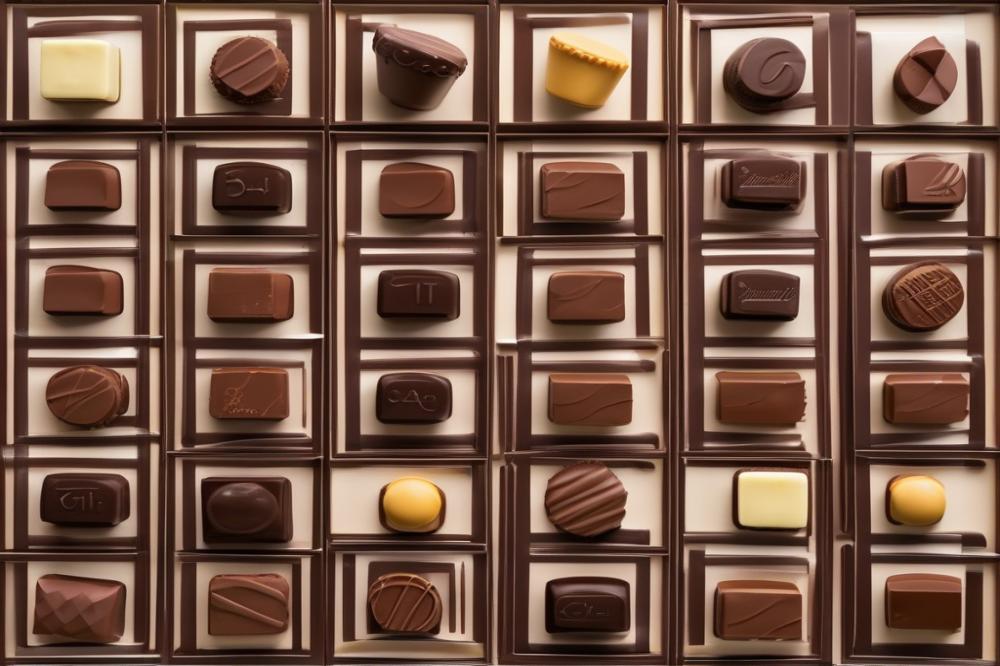
Creating exquisite chocolate art requires a blend of skill and creativity. Various techniques are employed in crafting these edible sculptures. Understanding these methods can deepen appreciation for the artistry involved.
A critical aspect involves tempering chocolate. This process ensures the chocolate has a smooth finish and a glossy appearance. Tempering requires careful heating and cooling, using specific temperature ranges. It sounds simple, but mastering this technique is essential for high-quality chocolate design.
Different tools are essential in the world of confectionery. A sharp knife can help slice and shape chocolate precisely. Molds are also popular for creating detailed forms. Some artists even use heat guns to gently warm and mold chocolate into desired shapes. Each tool plays a vital role in the overall outcome of the final piece.
Many chocolatiers focus on meticulous craftsmanship. Attention to detail transforms basic chocolate into a stunning edible sculpture. Techniques like airbrushing add color, while piping creates intricate designs. Mastery of these methods can elevate chocolate art to new heights, especially in event displays and chocolate exhibitions.
Culinary arts thrive on experimentations, such as combining chocolate with other materials. For instance, adding fruits or nuts can enhance flavor and texture. These combinations add dimension to dessert decoration, making each sculpture a feast for the eyes and the palate.
Like any art form, practice makes perfect. Each chocolatier develops their own style over time. Whether it’s a whimsical sculpture or an elegant piece, the craftsmanship shines through every creation. The history of chocolate sculpting shows that it has evolved into a respected art, celebrated around the world.
Overall, creating chocolate sculptures involves a blend of techniques and a passion for chocolate. It’s a journey that deliciously intertwines artistry and craftsmanship.
Chocolate Sculpting in Events and Exhibitions

Chocolate displays have become popular attractions at events and festivals around the globe. These artistic creations capture attention and stimulate the senses. From county fairs to upscale culinary festivals, chocolate art has a place at the table. Guests often marvel at exquisite edible sculptures that showcase the skill behind chocolate design.
Notable chocolate exhibitions, such as the Salon du Chocolat in Paris, highlight the best in confectionery craftsmanship. Artists from various countries showcase their talents there. Intricate designs draw visitors in, creating a festive atmosphere that celebrates culinary arts. Each piece tells a story or highlights a theme, making it more than just dessert decoration.
Events featuring these displays often include competitions where chocolatiers demonstrate their skills. Participants create mouthwatering masterpieces in real-time. Watching these artists work transforms a simple event into an unforgettable experience. Attendees leave with lasting impressions of creativity and taste. Artwork made from chocolate adds an element of surprise that enhances any gathering.
Other showcases around the world also emphasize the importance of chocolate sculpting. Festivals such as the Chocolatetown Festival in Hershey, Pennsylvania, or the chocolate show in New York exhibit dazzling installations. These events become a blend of education and enjoyment. Participants learn about the history of chocolate while indulging in delightful samples.
With such a rich background, chocolate art continues to evolve. It stands as a testament to the dedication of its creators. The combination of skill and creativity shows the true potential of edible art. As chocolate exhibitions grow in popularity, they provide a platform for rising talent in the art of chocolate design.
Impressive displays at events do more than please the eye. They connect people with the culinary world in unique ways. Attendees savor both the visual and flavor experience of chocolate creations. In this way, artistic craftsmanship turns ordinary events into something spectacular.
Modern Innovations in Chocolate Sculpting
The world of chocolate art has transformed dramatically in recent years. Artists now utilize advanced techniques and tools that were once unimaginable. This evolution reflects not just a change in taste, but an exciting shift in the possibilities of edible sculpture. Many contemporary trends highlight creativity and craftsmanship at their finest.
One major innovation is the use of new materials in chocolate design. Artists often incorporate elements like edible gold, vibrant color powders, and even different types of chocolate. These additions enhance the visual appeal of desserts and event displays. Traditional techniques are
Final Thoughts on Chocolate Artistry
The journey of chocolate sculpting spans centuries, showcasing the evolution of creative expression in the culinary world. From ancient rituals to modern-day celebrations, chocolate remains a symbol of joy. As we reflect on its history, it becomes clear that chocolate art plays a vital role in events, bringing people together in delightful ways.
Innovations in techniques and recipes have transformed how we perceive and enjoy chocolate. Today, talented artists use this sweet medium to craft everything from intricate sculptures to stunning centerpieces. These displays attract attention and spark conversations, adding an extra layer of excitement to any occasion.
Looking forward, the future of chocolate artistry appears promising. As new trends emerge, there will be more opportunities for creative minds to experiment. Artists will likely continue to push boundaries, merging flavors and textures to captivate audiences. This craft is not just about aesthetics; it evokes emotions and creates lasting memories during celebrations.
In conclusion, chocolate sculpting has carved out its essential place in the culinary arts. It enhances festivities, honors traditions, and showcases human creativity. As we celebrate milestones and special moments, this delicious art form will remain a cherished part of our lives.

